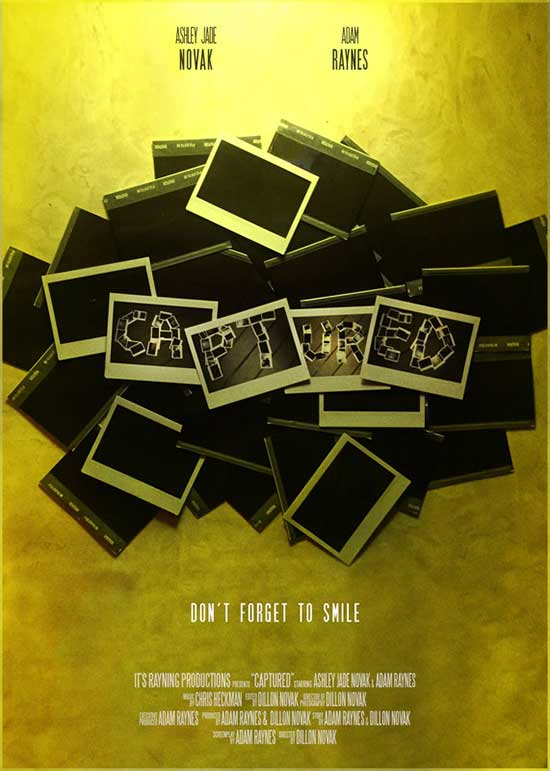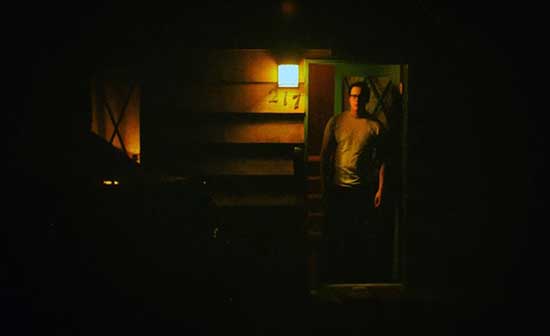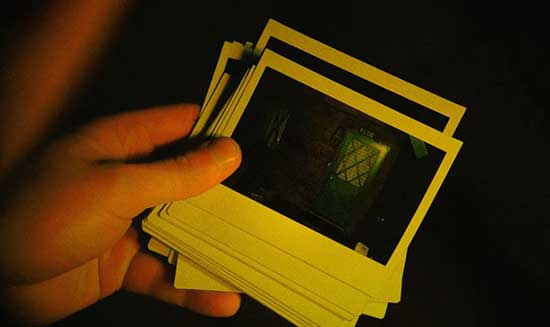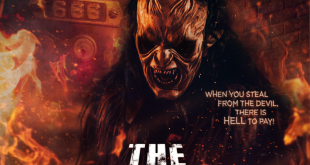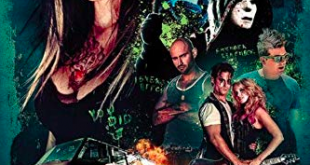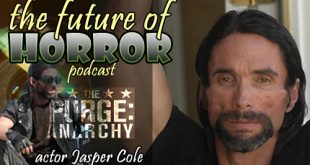Adam Raynes, the writer behind the creepy home invasion short CAPTURED spoke with Kevin Nickelson of Horror News Net. Find out why Adam believes the less is more approach can be a more effective means of storytelling.
KN: Growing up, did you have anyone, a particular person or perhaps an icon, an actor or writer or a director that kind of sparked you or product you into filmmaking?
AR: I was a really big Jim Carrey fan. I loved The Cable Guy and I just ran around talking out of my butt and reenacting the Evil Times restaurant scene for friends and family. And I kind of fell in love with comedy. Those of us that are invested in comedy, we have this darker side. Look at Jordan Peele right? Get out and Us. I know he started on the funny route and now he’s getting a little bit darker. Jim Carrey even had ventured a little bit into the darker side of things too. I think of myself as kind of being first and foremost a funny guy.
KN: And this dark sense of humor, I guess that turns dark when you remove the humor altogether. I don’t know if there was any particular horror influence. I can tell you what I was traumatized by, Tim Curry’s It. I remember being maybe six or so, maybe a little bit older, and being told to leave the room because they’re watching a scary movie. And I remember leaving, but kind of watching the film through the bannisters and just being really scared by that. And as I progressed in filmmaking and other entertainment I got to a point where I said, “You know what, it’s kind of fun to scare people. It’s kinda fun to elicit different emotions other than just comedy and laughing.”
KN: It’s interesting because I have read about many a filmmaker, and even studied a little bit of these genres of comedy and horror and there really is a connection to both. They contain the same kind of setup and payoff. They both involve an emotional release, which is either the laughter or fear. Is that something that you’ve noticed too as you’ve been working and impacted by comedy as you say, and now you’re getting into horror films?
AR: I definitely think so. And I think it’s so important to have that sense of humor, because if you don’t you’re going to be genuinely scared of the things you’re creating, and things you’re venturing into. I feel a lot of times on these horror shoots, we’re just laughing together. You’re spot on with that kind of buildup and release. The buildup of the joke and then the punchline, or a jump scare, or a scare in general. I’m looking for that kind of surprise moment.
KN: Do you have a particular writer that impacted you in horror, for filmmaking in general?
AR: Sure. I think about James Wan with the Saw franchise and the question during the opening song, “Do you want to play a game?” I saw that in theaters. The ending blew me away. I’ve been doing a handful of horror shorts now working on a couple, and they have kind of rubbed off on me. They don’t lean too much on the gore, which I can appreciate. And of course they’ve gone on and made so many other things. Dead Silence, Insidious, The Conjuring Universe. And what they’re doing has been incredible.
KN: It’s interesting that you actually mentioned not leaning on gore and the shockingly bloody scene in SAW. That’s exactly what sets SAW apart from the other serial killer films.
KN: SAW started a new genre called gore porn, right? Just this incredible amount of gore, and blood and violence. This new generation of how gross can we make things. But I think for me I appreciate horror when it uses the audience’s imagination. Because I think so often what we can imagine and what we think the big bad is often scarier than whatever it can be depicted on screen. With the movie Bird Box, they depicted the big bad, and he was laughable. So they ended up taking it out. And I think that happens a lot in horror.
AR: You have this build up, and then they reveal what it is and you’re like, “Oh, that’s not so bad.” But if they didn’t show what it was that was, you might’ve still been afraid of it because our own imaginations are much worse than whatever they can show. If you leave that to the audience then everybody kind of gets that pay off.
KN: I really connected with what you just said regarding the less is more, and what you don’t see. That’s something that some of the great film makers throughout history have abided by John Carpenter, Alfred Hitchcock. They were as much known for what they left off of the table as what they had showing in front of the camera. And you’re right that it’s the imagination that conjures up monsters and demons that are far more hideous and grotesque than anything you could possibly show on screen. I’m delighted if that’s the style that you are opting for.
AR: I do think we need to see more of that. We see far too many films where the visceral nature of the kill is the key is the key part of the film. And that’s kind of tiresome from me.
AR: And I think that’s something that drives me to being an independent filmmaker. I think helps creatively in some ways to be restricted by budget and be forced in some ways to utilize what you do have. Then in a lot of ways you can tell a greater story than what you can afford.
KN: Tell me about your experiences growing up.
AR: When I was in high school I was really into the acting scene. I wanted so desperately to get into film classes but they were in high demand. And unfortunately I was never able to get in. So they just crunch numbers in the computer and they say, Oh, you don’t get this class now. So I really wanted to do that.. I asked my mom back there to get me a camera for birthday, Christmas, you name it. Eventually I get one and I started making these terrible short films. But you gotta start somewhere and it of helps teach me a little bit, I guess about storytelling and kind of where you want to go.
AR: I didn’t have a formal film education or background. I actually went to school for EMS, so I’m running around in an ambulance and a fire engine and making films in the meantime. I think the one thing that was really beneficial was not going to film school, I got to focus more on the creative side of filmmaking as opposed to the other aspects. I got to kind of focus more on the in front of the camera stuff and a creativity.
KN: Let’s get started in talking about Captured which is interesting in much of a story you can put into four minutes.
AR: Yeah. And without dialogue that’s, that’s one of the things I really wanted to try and do is tell a story without dialogue.
KN: So you’re, you’re literally having a length of time that is basically a movie trailer. Talk about the genesis of this, and how this came about.
AR: The thought for Captured came from my youth, actually. I feel like maybe a lot of kids nowadays, they don’t understand or know about a disposable camera, but fortunately, I was able to get in on all that. My mom used to just have disposable cameras kind of laying around the house and we’d take them to different places: amusement parks, school functions, whatever. We could get pictures and we just kind of collected them as they filled up. And then we would take just like maybe five or six at a time to Target to get developed. And, I remember we did this one, they developed it, then we’d go pick up the pictures, and there’s a little moment of excitement, “Oh, what are these pictures going to end up looking like?”
KN: So here you have Captured getting some notoriety, at the very least with Deaths Parade Film Fest. So talk about how that came together.
AR: We’ve already been in a handful of festivals and, we just love the opportunity to get in front of audiences and let them see it. Because I think something that a lot of people appreciate is that, something you touched on is, we’re telling this story in such a short amount of time, and we’re doing it without dialogue because we’re trying to do something different.
AR: I’m trying to do something new, and that’s something we’ve been trying to do with each of our short films that we’ve made together is, if we’re not breaking boundaries and rules for filmmaking in general to at least break them for ourselves and always be constantly growing, always beginning something new. That’s how I met up with Anthony as fate would have it – applying to different film festivals, and just trying to get it in front of different people’s eyes. Fortunately he liked the idea, andt the judges liked the idea to bring it on board. And we’re glad to have the opportunity to play it to more people and get more feedback and see what people like about it.
KN: So what’s on the horizon for Adam Raynes?
AR: We are really close to the end of post-production for another horror short called Insomnia, about a middle aged man that lost his life and he’s having a hard time sleeping after her tests. I think that one’s gonna end about three minutes long. I feel like each time we make something that’s the best thing we’ve ever made. So I really feel that it’s going to be potentially the best thing we’ve made. And next weekend we are going to be filming a new horror short called Til Death.
KN: Well, thank you very much, Adam Raynes, for the interview and I hope that you have a resounding success with Captured.
AR: Thank you, Kevin. I appreciate you guys your call. Thank you, Anthony and thank you Death’s Parade for the opportunity.
KN: You’re quite welcome. I have a feeling it’s gonna be quite the success for you.
 Horror News | HNN Official Site | Horror Movies,Trailers, Reviews
Horror News | HNN Official Site | Horror Movies,Trailers, Reviews
